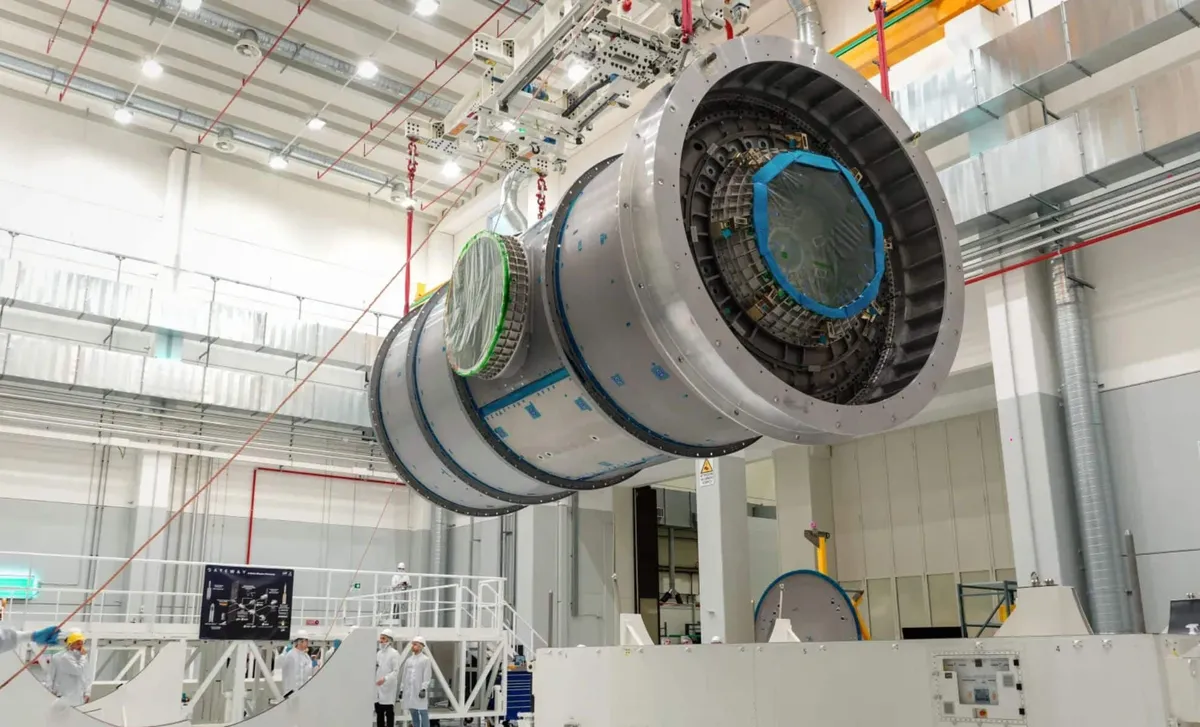
NASA’s Artemis program is making significant strides towards its ambitious goal of establishing a long-term human presence on the Moon. At the heart of this effort is the Gateway lunar space station, a pioneering project aimed at supporting astronauts, facilitating scientific research, and preparing for future missions to Mars. Orbiting the Moon, Gateway will serve as a staging ground for deep space exploration, enhancing our understanding of living and working beyond Earth’s protective atmosphere.
The latest milestone in the Gateway project involves major advancements on the Habitation and Logistics Outpost (HALO) module. NASA and its international partners, including the European Space Agency (ESA) and the Italian Space Agency, report that HALO is nearing completion at the Thales Alenia Space facility in Turin, Italy. Once finalized, the module will be transported to Northrop Grumman’s site in Arizona for final outfitting and testing at NASA’s Kennedy Space Center in Florida.
With contributions from multiple nations and private companies—such as SpaceX, Blue Origin, and Maxar Space Systems—the Gateway project represents a global effort to extend humanity’s reach into space.
NASA has set a target launch date of no later than December 2027 for two critical modules: the Habitation and Logistics Outpost (HALO) and the Power and Propulsion Element (PPE). The PPE will provide solar electric propulsion, making Gateway the most powerful spacecraft of its kind ever flown. These integrated modules will be launched aboard a SpaceX Falcon Heavy rocket and will spend about a year traveling uncrewed to lunar orbit, collecting scientific data on deep-space radiation before becoming operational.
“Building and testing hardware for Gateway is truly an international collaboration,” said Jon Olansen, Gateway Program Manager at NASA’s Johnson Space Center in Houston. One of the key international contributions is from ESA, which is testing its Lunar Link communication system in France. This cutting-edge system will ensure seamless communication between the Moon and Gateway.
ESA has also started producing Lunar I-Hab, a second pressurized habitation module to be delivered aboard Artemis IV, further expanding Gateway’s capacity for long-term lunar exploration. Meanwhile, Maxar Space Systems is making significant progress on the PPE, installing Xenon and chemical propulsion fuel tanks and qualifying the largest roll-out solar arrays ever built.
Once in lunar orbit, Gateway will serve as a scientific hub, logistics center, and transportation waypoint for future Artemis missions. The Artemis IV crew will be the first to board Gateway, arriving aboard an Orion spacecraft to dock the Lunar I-Hab module, expanding the station’s livable space.
SpaceX's Starship human landing system will then ferry astronauts from Gateway to the Moon’s South Pole, where NASA aims to establish a permanent research outpost. Additionally, NASA has partnered with Blue Origin to develop Blue Moon, a second human landing system supporting Artemis V and future missions.
International contributions also include Canada’s Canadarm3 for external maintenance and cargo handling, and Japan’s JAXA-designed life support systems. The Mohammed Bin Rashid Space Centre (MBRSC) of the UAE is working on Gateway’s Crew and Science Airlock, set to launch on Artemis VI.
Beyond supporting Moon missions, Gateway will act as a testbed for deep-space exploration, gathering crucial data on space weather and radiation. Understanding these harsh environmental conditions is essential for preparing future crews for the months-long journey to Mars.
Three initial radiation-focused investigations are planned aboard Gateway, studying the effects of solar and cosmic radiation on astronauts and spacecraft systems. These studies will aid engineers in designing better shielding and life support for the next generation of deep-space vehicles.